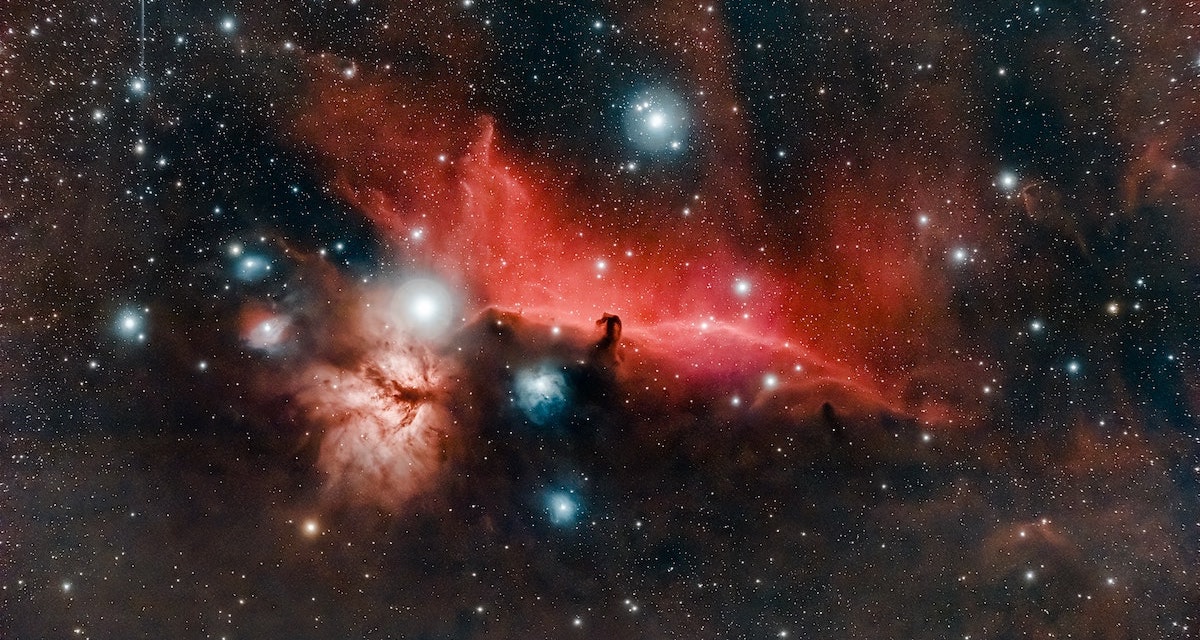Crime Scenes, Raisin Bread and the Universe
For Dr. Perry Phillips, the creation of the universe is a cosmological crime scene. Astronomers investigate the causes and reasons for the creation of the universe—the most notable difference between CSI: Miami and this “CSI Cosmology” is trading gloves for telescopes.
Last week for the annual Herrmann Lecture Series hosted by the Center for Faith and Inquiry, Phillips—an astrophysicist, biblical scholar and husband to Elaine Phillips, Harold John Ockenga Professor Emeritus of Biblical and Theological Studies—applied his extensive knowledge of space and astrophysics to his Christian faith to explore the mystery of what creation looked like.
Here are some takeaways from his three-part lecture, Thrice Supported Big Bang:
Session 1: The Expansion
If you bake raisin bread, you’ll notice that the raisins get farther apart as the bread bakes. The raisins aren’t wandering, though—the dough expands, and the raisins move along with it. The same goes for the universe, Phillips suggests. Though perhaps less sweet, he explains, “The galaxies that are receding from us are not moving through space—space itself is expanding and pulling the galaxies with it.”
This idea of an expanding universe, called the “Red Shift,” was first observed in 1912 and has gained universal support by astronomers worldwide. Though there are about 20 galaxies near the Milky Way that are moving toward Earth due to gravitational pull, Phillips says every galaxy beyond 250 light years out is moving away from us.
“You cannot have a static universe,” says Phillips. “It either expands or contracts.”
With the idea of expansion, says Phillips, comes the idea that the universe was once compressed into a tiny, seed-like origin with a small beginning—and “more importantly, a Beginner.”
Session 2: Elemental Abundance and Planck Radiation
To find out if a fireplace was used after the flames are gone, you can stick out your hand to detect residual heat—astronomers essentially do the same when thinking about the creation of the universe. According to Phillips, this wide-scale temperature-checking method led to the discovery of the Planck radiation, or cosmic microwave background, a type of radiation that proves that there is leftover heat in the universe from the “hot initial conditions of the universe.”
Pressed into a tiny seed of matter at its inception, the universe was so hot that atoms could not exist as whole atoms—protons and electrons were scattered about in a what Phillips calls a “universal soup of positive and negative particles.” During the first three minutes of the Big Bang, Phillips suggests, the temperature of the universe dropped so fast that atoms began crashing into one another at high velocities, creating hydrogen, and later, helium. As these elements were formed, so were the other parts of our universe that are built upon them—the bright stars, unique planets and breathtaking gas clouds we see today.
These brilliant stars in the universe are made mainly of helium, and the ones closer to our galaxy appear unstable, prone to explosions says Phillips. But the stars further away are made of purer, primordial helium—suggesting that they were made during a time where the elements were less contaminated and expanded outward, he explains.
Session 3: “But there are problems . . .”
With every theory comes opposition—in this case, horizon and flatness.
Walking outside to look at the stars to your left and then to your right, you may wonder, how are they all doing the same thing? If the horizon on the left can’t communicate with the horizon on the right, uniformity in the universe is bizarre.
And because we live in a “flat” universe, its expansion could slow down even though it is unlikely to re-collapse. Somehow, with everything in the universe so widely spread out and unlikely to ever touch again, everything remains consistent. How is this congruence possible over billions of light years?
To address these apparent contradictions, Phillips points toward inflation. He suggests the universe was once a tiny speck, smaller than we can comprehend. But that in microseconds, it doubled to the size of a marble. Everything in the universe was together at one point, agreeing on temperature and nature, and as it inflated, it learned how to maintain those features apart from the rest of the body.
Considering the idea of the universe starting as a seed, Phillips ponders, “Why should there only be one seed?” He suggests the possibility of more than one universe, with all of creation pointing toward the same Creator. “God hides things because he enjoys watching his creatures understand these things and search them out,” says Phillips. “It is the glory of God to conceal things, but it is the glory of humankind to be able to understand these things on a universal basis.”
By Ellian Chalfant ’22, communication arts
 The Bell
The Bell